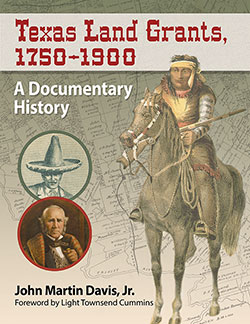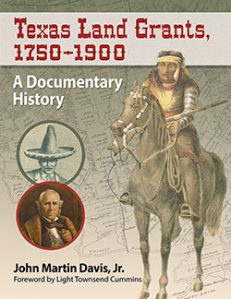Texas Land Grants, 1750–1900
A Documentary History
$49.95
In stock
About the Book
The Texas land grants were one of the largest public land distributions in American history. Induced by titles and estates, Spanish adventurers ventured into the frontier, followed by traders and artisans. West Texas was described as “Great Space of Land Unknown” and Spanish sovereigns wanted to fill that void. Gaining independence from Spain, Mexico launched a land grant program with contractors who recruited emigrants.
After the Texas Revolution in 1835, a system of Castilian edicts and English common law came into use. Lacking hard currency, land became the coin of the realm and the Republic gave generous grants to loyal first families and veterans. Through multiple homestead programs, more than 200 million acres had been deeded by the end of the 19th century. The author has relied on close examination of special acts, charters and litigation, including many previously overlooked documents.
About the Author(s)
Bibliographic Details
John Martin Davis, Jr.
Format: softcover (8.5 x 11)
Pages: 196
Bibliographic Info: 117 photos, notes, bibliography, index
Copyright Date: 2016
pISBN: 978-1-4766-6549-8
eISBN: 978-1-4766-2530-0
Imprint: McFarland
Table of Contents
Table of Contents
Acknowledgments vi
Foreword by Light Townsend Cummins 1
Introduction 3
I—Spanish Grants, 1750–1820 5
II—Mexican Empresario Grants, 1821–1829 10
III—Other Mexican Grants, 1830–1835 16
IV—Loan Scrip Certificates, 1836–1863 22
V—Military and Emigrant Headrights, 1836–1887 26
VI—Lot and Island Sales, 1836–1907 29
VII—Republic Empresario Grants, 1841–1844 32
VIII—Trans-Nueces and Trans-Pecos Grants, 1848–1858 36
IX—Homestead and Education Grants, 1845–1897 39
X—Internal Improvement Grants, 1836–1882 44
XI—Panhandle and Western Grants, 1879–1900 48
XII—Speculation 51
Conclusion 55
Illustrations 56
Chapter Notes 173
Bibliography 178
Index 181
Book Reviews & Awards
“this study of Texas land grants breaks new ground in expanding the historical understanding of land ownership as an integral component of the larger history of Texas”—The Neatline: A Newsletter of the Texas Map Society.





